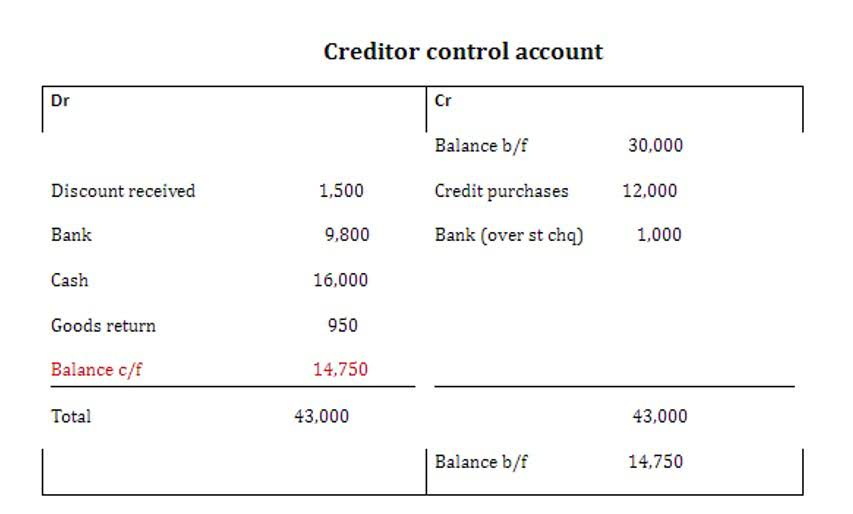
The result of posting adjusting entries should be an adjusted trial balance where the total credit balance and the total debit balance match. A shorter internal accounting cycle can make bookkeeping more manageable, especially when the company’s finances are complicated. However, businesses with internal accounting cycles also follow the external accounting cycle of the fiscal year. Once you’ve converted all of your business transactions into debits and credits, it’s time to move them into your company’s ledger.

Identifying and recording transactions.

You need to calculate the trial accounting definition in business balance at the end of the fiscal year. The objective of the trial balance is to help you catch mistakes in your accounting. You need to perform these bookkeeping tasks throughout the entire fiscal year. Missing transaction adjustments help you account for the financial transactions you forgot about while bookkeeping—things like business purchases on your personal credit. Accruals make sure that the financial statements you’re preparing now take those future payments and expenses into account. Simply put, the credit is where your money is coming from, and the debit is what it’s going towards.
Which of these is most important for your financial advisor to have?

The accounting cycle serves as the backbone of financial management, providing a systematic approach to track, analyze, and communicate a company’s financial health and performance. From the meticulous input of financial data to the generation of reports, the accounting cycle ensures a systematic approach to maintaining financial records. At the end of any accounting period, a trial balance is calculated for all accounts retained earnings on the general ledger. This trial balance tells the company the amount of cash each unadjusted account is worth.

What is Qualified Business Income?
- Once posted to the general ledger, you need to balance all of your business’s transactions.
- Often a public company will align its accounting cycles with when its financial statements are due.
- Other transactions or activities of the company indicated debit balances of $800 as Accounts Receivables and $100 inventory besides $600 cash debit.
- Closing entries offset all of the balances in your revenue and expense accounts.
- The accounting cycle is the series of steps required to complete the accounting process.
- These are not the only financial statements that can be generated, but they are the most important.
Alternatively, the budget cycle relates to future operating performance and planning for future transactions. The accounting cycle assists in producing information for external users, while the budget cycle is mainly used for internal management purposes. The accounting cycle focuses on historical events and ensures that incurred financial transactions are reported correctly.
- It’s accounting law that if money goes into one account, it has to come out of another.
- A common example is not paying your workers the salary until the end of the month.
- We’re going to go over all of the steps and provide examples of what each step would look like.
- At the end of every accounting period, some transactions are missed from the records.
- Instead of closing, the business transfers its balance into the next accounting period.
- These journal entries are known as adjusting entries, which ensure that the entity has recognized its revenues and expenses in accordance with the accrual concept of accounting.
The steps include identifying and recording transactions to use them for further collective analysis to be aware of a company’s current financial scenario. It is the responsibility of a bookkeeper to maintain and keep a check on the accounting process. The accounting cycle is a process used to document and report on all financial transactions during an accounting period, which is commonly quarterly or annually. Usually, an accounting cycle is managed by a bookkeeper, who may use accounting software to make the process simpler. We begin this course at the fifth step of the accounting cycle «Record and Post Adjusting Entries».
Recommended if you’re interested in Business Essentials
On the other hand, the budget cycle includes recording and analyzing the budget-based transaction a company decides to make for a future project. The accounting cycle is a collective process of identifying, analyzing, and recording the accounting events of a company. It is a standard 8-step process that begins when a transaction occurs and ends with its inclusion in the financial statements and the closing of the books.
Ready to save time and money?

Sole proprietorships, other small businesses, and entrepreneurs may not follow it. We collaborate with business-to-business vendors, connecting them with potential buyers. In some cases, we earn commissions when sales are made through our referrals. These financial relationships support our content but do not dictate our recommendations. Our editorial team independently evaluates products based on thousands of hours of research. Learn more about our full process and see who our partners are here.
What Is the Difference Between the Accounting Process and the Accounting Cycle?
- Learn more about our full process and see who our partners are here.
- Understanding the accounting cycle is important for anyone in the world of business.
- Regardless, most bookkeepers will have an awareness of the company’s financial position from day to day.
- The accounting cycle is an eight-step process that accountants and business owners use to manage the company’s books throughout a specific accounting period, such as the fiscal year.
- The first step in the accounting cycle is identifying transactions.
Since the exact cost machinery suffers can’t be measured in cash, there’s a formula that estimates that depreciation. That amount is then separated over many accounting periods, https://www.bookstime.com/ depending on how long the asset’s useful life is. If a customer delays payment for a month, that transaction is recorded as accrued revenue. Accrued expenses are the opposite, so expenses made but not yet paid. A common example is not paying your workers the salary until the end of the month.
wordpress theme by initheme.com

